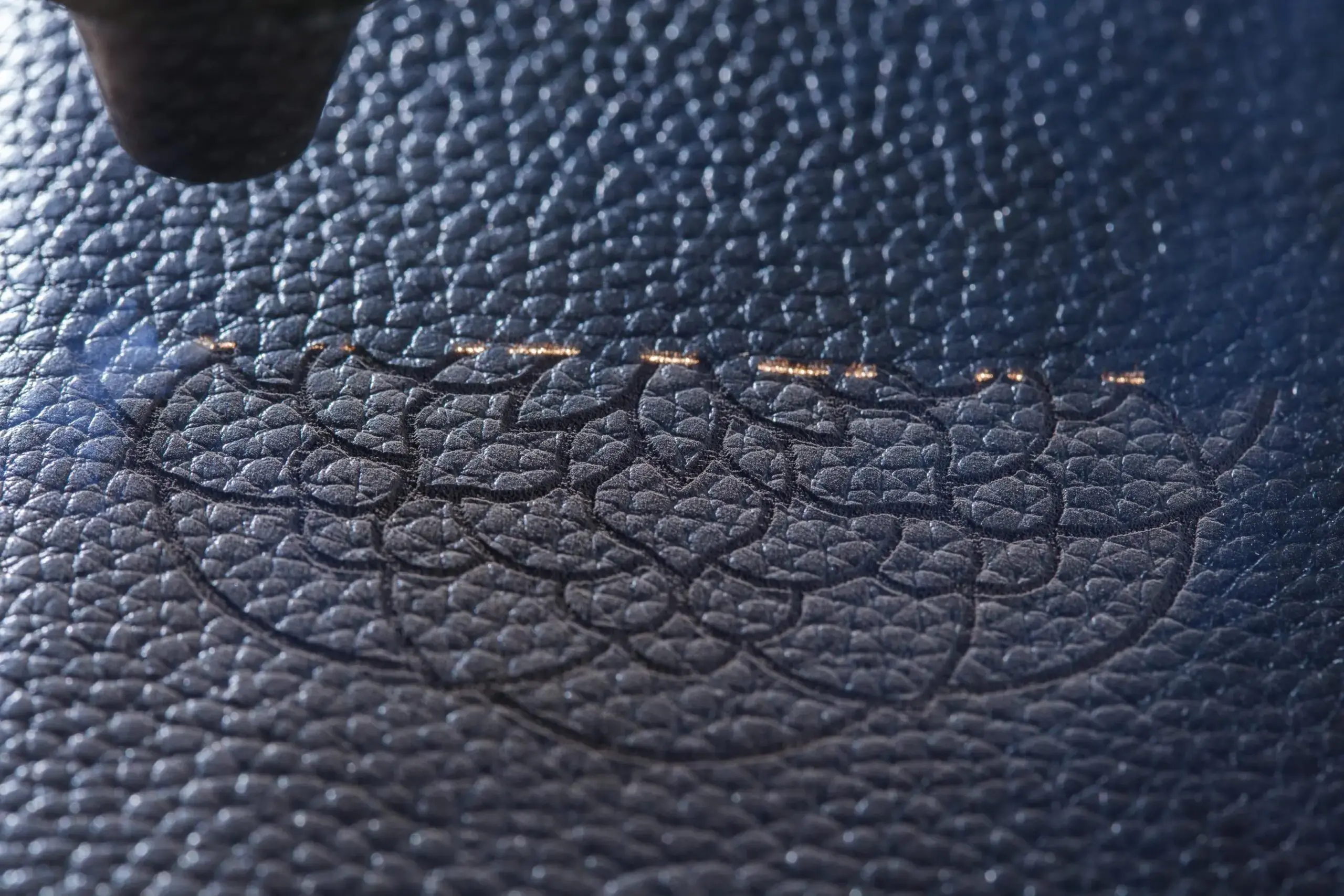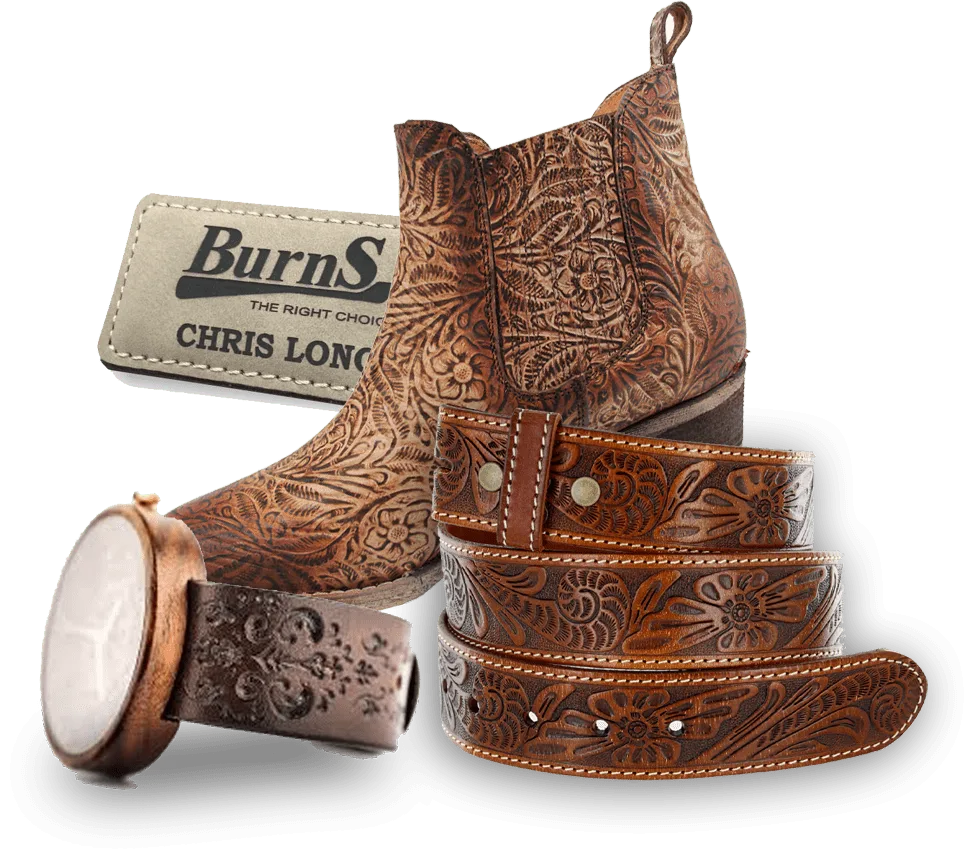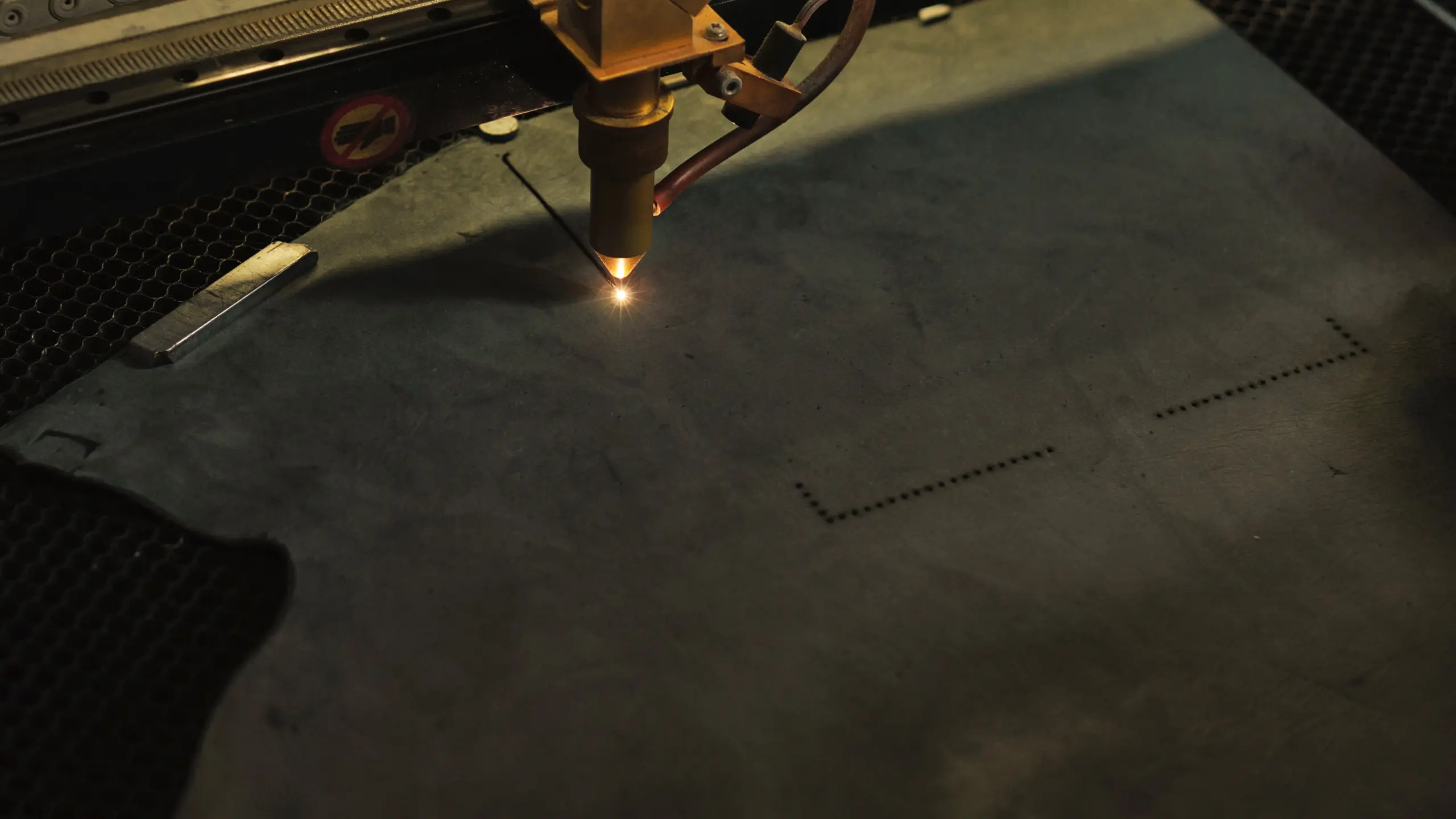
Leather Engraving
Everyone Loves Leathers
Due to its high-end appeal, durability, and versatility leather is still commonly used on fashion and furniture products as well as for long term functionality. Whether you want to process synthetic, full grain, or even Italian leather generally speaking leather is a wonderful material for CO2 laser cutting and engraving. In fact you can laser cut, emboss, perforate, mark, etch, or engrave leather.
The goal when laser cutting or marking leather is for the laser machine is to efficiently process the leather piece both cleanly and professionally with little to no post processing requirement. I will address how to best achieve this below…

What types of leather can you laser cut or engrave?
Since leather easily absorbs the CO2 laser wavelength it can process about any leather type or hide including:
- Full-grain
- Nubuck or Top-grain
- Genuine
- Bonded (low-quality)
- Split leather
- Deerskin
- Buckskin
- Synthetic / faux / man-made
- Ultrasuede
Synthetic leather is a quite common laserable material due to the various color options available.
THE RIGHT MACHINES FOR THE MATERIAL
If you’ve ever seen leather being processed you know it’s a tough material. It can be a difficult, abusive material for traditional tools such as a blade. Tools that contact leather will inevitably get a lot of wear and tear and need regular maintenance. Additionally, contact tools also cause deformation to the leather. The alternative is a CO2 laser beam.
The imprint or mark that a CO2 laser produces occurs when the infrared laser burns or evaporates the leather surface. Since a laser beam is contact free it leaves you with little to no tool wear or maintenance. In return, it produces a much more precise and detailed sealed edge that often eliminates the need for post-processing clean up.
Using a laser cutter or engraver versus a cutting plotter gives you a professional edge that is hard for plotters to emulate. For thicker or heavier leather cutting you can either decrease the travel speed of the laser head or if speed of productivity is important you can also increase the power.
The great news is that both genuine and synthetic leather substrates are all very popular and highly receptive to CO2 laser beam wavelength and can easily process:
- leather bracelets or necklaces
- leather wallets or bill folds
- leather purses or handbags
- leather customized products
- leather belts or tool belts
- leather jackets or coats
- leather shoes or sandals
- leather briefcases or boxes
- leather personalized tags
- leather books and book covers
- leather DIY crafts (Pinterest)


LEATHER ENGRAVING TIPS:
Laser etching or engraving leather produces a debossed effect and (depending on the color of the leather) offers a noticeably clean, dark contrast to the surrounding leather. So, if you want a good contrast select a light colored leather such as off-white, light beige, tan, or light brown. Alternatively, chocolate brown or black engraved leather produces a low contrast, understated or cool effect.
Leather Cutting Laser Settings:
You don’t need a lot of power to cut leather. If you want a cleaner cut its best to use a minimum of 65 watts laser power. At 70 watts a Boss LS-1420 hobby laser can cut through 1/8″ (8oz.) veg-tan leather in a single pass. NOTE: Different leather types or hides react differently to the laser so testing and dialing in your speeds and power levels is critical to achieving your desired result.
Hobbyists and retailers who process leather will significantly up the perceived value of their creatives by offering clients a custom engraved design, logo, or text. The quality of the final imprint, mark, or cut depends on the quality of the artwork itself. The best formats for leather are vector or a high resolution JPG file. Unlike the vector-cutting function where the laser cuts the leather in one continuous run, raster engraving works by starting from the top and working down to the bottom of the leather piece before it stops.
Contact or visit us if you have a unique application or material that you would like to see processed on our laser. We would be glad to help!